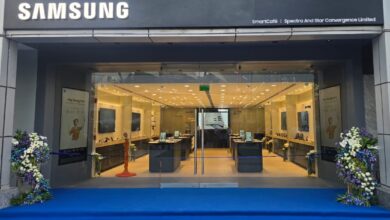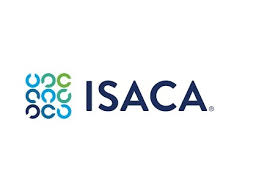Tanner Pharma Increases Europe-Based Inventory of Leukine® to Expand Availability and Enhance Response to Potential Radiation Exposure Due to the Ongoing Conflict in Ukraine
Tanner Pharma Group, an international distributor of essential medicines, announced that it has significantly increased its inventory of Leukine (sargramostim, yeast-derived rhuGM-CSF) to be held in Europe. This action is being taken in partnership with Leukine’s owner, Partner Therapeutics (PTx), in response to the ongoing war in Ukraine and escalating potential for incidents that could require rapid deployment of medical interventions to treat radiation or chemical exposure.
“In response to the ongoing conflict in Ukraine, Tanner is supporting preparedness and response in Europe by increasing the local inventory of Leukine that can be rapidly deployed in response to an emergency,” said Banks Bourne, CEO and Founder of Tanner Pharma. “The unique efficacy of Leukine, which has been shown to improve survival when given within 96 hours after radiation exposure and without whole blood transfusions, makes it a highly effective countermeasure with important logistical advantages in the event of a nuclear detonation. Positioning more supply in Europe ensures that more Leukine is available quickly, if needed.”
Leukine is an immune system modulator that is FDA approved to treat the hematopoietic effects of acute radiation syndrome and has been held for use by the U.S. Government as a medical countermeasure since 2013. Leukine is also recommended to treat H-ARS in the International Atomic Energy Association (IAEA) 2020 Medical Management of Radiation Injuries(1) and was used to successfully treat some victims of the Chernobyl Nuclear Power Plant in 1986.(2) Beyond ARS, Leukine is recommended in EMEA/CPMP Guidance Document on the Use of Medicinal Products for the Treatment of Patients Exposed to Terrorist Attacks with Chemical Agents as a treatment for exposure to sulfur mustard (HD) gas.(3) It is currently under development, but not currently FDA-approved for use against sulfur mustard exposure.
High doses of radiation profoundly damage the body’s immune system. Damaged cells include monocytes, macrophages, platelets, neutrophils, dendritic cells and red blood cells, in other words, pancytopenia. Leukine stimulates each of these cell types and is shown to accelerate recovery from pancytopenia. Its broad impact enables increased survival from ARS without the need for blood transfusions. This is a critical advantage given the expectation that after a radiological or nuclear event, blood products will be limited or unavailable. It is also the only ARS countermeasure that has been shown to be effective when administered more than 24 hours after exposure. In fact, the studies have shown efficacy when administered up to 96 hours after exposure. (4,5) In the aftermath of radiological or nuclear event, a 48-96 hour treatment window is absolutely critical. (6,7) The logistical challenges of making supplies and health care professionals available for response and treatment suggest it will be 2 days before drugs can be administered at any scale. Leukine is also stable at room temperature for 12 months, eliminating the need for a refrigerated supply chain in a crisis.
Below is a summary of the use of Leukine for Acute Radiation Syndrome (ARS) and Sulfur Mustard (HD) Gas Exposure provided by Partner Therapeutics:
ABOUT LEUKINE IN ACUTE RADIATION SYNDROME (ARS)
Leukine is FDA approved to increase survival in patients exposed to myelosuppressive doses of radiation (Hematopoietic Subsyndrome of Acute Radiation Syndrome or H-ARS). Data from multiple GLP NHP studies funded by the U.S. Biomedical Advanced Research and Development Authority (BARDA) demonstrate that Leukine increases survival by stimulating thrombopoiesis and significantly increasing platelet count in addition to accelerating the recovery of leukocytes and reticulocytes, thereby addressing all three primary components of hematopoietic damage from radiation exposure, collectively pancytopenia. NHP studies show that Leukine improves survival and accelerates recovery from myelosuppression (including thrombocytopenia) when given up to 96 hours post radiation exposure. (4,5,8) Leukine is not EMA approved for H-ARS.
Leukine is a yeast-derived recombinant form of Granulocyte-Macrophage Colony Stimulating Factor (GM-CSF), a pleiotropic small protein that promotes the generation of megakaryocytic and erythroid progenitors and induces progenitor cells to divide and differentiate within the granulocyte and macrophage pathways. Leukine induces production, maturation and differentiation of the myeloid lineages of hematopoietic precursor cells, including granulocyte, macrophage, platelet, dendritic cell and red cell lineages. It also activates mature granulocytes and monocytes, increasing their phagocytic and lytic properties. Leukine’s impact on platelets, monocytes, macrophages, and dendritic cells, in addition to its known effects on neutrophils, has been shown across several disease states and supports its use in H-ARS.
Leukine’s FDA label in ARS reads: “To increase survival in adult and pediatric patients from birth to 17 years of age acutely exposed to myelosuppressive doses of radiation (Hematopoietic Subsyndrome of Acute Radiation Syndrome [H-ARS]);” Leukine® for Injection: see www.leukine.com/pi for Leukine prescribing information.
ABOUT LEUKINE IN SULFUR MUSTARD (HD) GAS EXPOSURE
Leukine is not FDA or EMA approved to treat HD gas exposure. Leukine is recommended in EMEA/CPMP Guidance Document on the Use of Medicinal Products for the Treatment of Patients Exposed to Terrorist Attacks with Chemical Agents as a treatment for exposure to HD gas.
HD exposure suppresses bone marrow function, leading to myelosuppression and pancytopenia. Leukopenia was reported in patients requiring hospitalization after exposure during WWI, WWII and the Iran-Iraq War, and mortality was reported in all cases where leukocyte counts dropped below 200/µl6. While mortality is reported in less than 2.5% of all exposed to HD, hematological damage is the primary driver of hospitalization and severe hematological damage is the primary cause of mortality. (10)
Leukine accelerates recovery of bone marrow function and recovery from pancytopenia and decreases deaths from infections in persons with bone marrow failure under diverse circumstances including following intensive chemotherapy and after acute high-dose whole body radiation in the context of hematopoietic cell transplants.(4,5,8) Both clinical experience in persons receiving Leukine after chemotherapy and therapeutic radiation and data from GLP NHP ARS studies supporting Leukine’s approval and use in those indications, demonstrate that Leukine accelerates recovery from bone marrow suppression and pancytopenia and reduces the rate of infection and septicemia, and is likely to provide the same benefit after HD exposure. (4-5,9-11)
Tanner provides a regulatory-compliant pathway to make Leukine available in international markets. For more information about this program or to request access to Leukine, please email [email protected].
ABOUT TANNER PHARMA GROUP
Tanner Pharma Group partners with biopharmaceutical companies to provide turn-key solutions that increase patient access to medicines around the world. Expanding across 130+ countries, Tanner provides tailored solutions to biopharmaceutical companies outside their core markets of focus. For more information, visit www.tannerpharma.com.
For more information about Partner Therapeutics, visit https://www.partnertx.com/.
(1) Medical management of radiation injuries, Vienna, International Atomic Energy Agency, 2020; Safety Reports Series no. 101.
(2) Dainiak N, Medical management of acute radiation syndrome and associated infections in a high-casualty incident, Journal of Radiation Research, Vol. 59, No. S2, 2018, p. ii54-ii64. Doi:10.1093/jrr/rry004
(3) EMEA/CPMP Guidance Document on the Use of Medicinal Products for the Treatment of Patients Exposed to Terrorist Attacks with Chemical Agents; The European Agency for the Evaluation of Medicinal Products Pre-authorisation Evaluation of Medicines for Human Use, London, 25 April 2003; EMEA/CPMP/1255/03
(4) Clayton N, et al. (2021): Sargramostim (rhu GM-CSF) Improves Survival of Non-Human Primates with Severe Bone Marrow Suppression after Acute, High-Dose, Whole-Body Irradiation, Radiation Research 195:191-199. https://doi.org/10.1667/RADE-20-00131.1
(5) Zhong Y, et al. (2020): Efficacy of delayed administration of sargramostim up to 120 hours post exposure in a non-human primate total body irradiation model, Int. J. Radiat. Biol.; https://doi.org/10.1080/09553002.2019.1673499
(6) Yeddanapudi N, et. al., (2018): Informing CONOPS and medical countermeasure deployment strategies after an improvised nuclear device detonation: the importance of delayed treatment efficacy; Int. J. Radiat. Biol.
(7) Pray L, et al., (2019): Exploring Medical and Public Health Preparedness for a Nuclear Incident: Proceedings of a Workshop; National Academies Press. http://doi.org/10.17226/25372
(8) Gale R, Armitage J, (2021): Use of molecularly cloned haematopoietic growth factors in persons exposed to acute high-dose, high-dose rate whole-body ionizing radiations; Blood Reviews 45; https://doi.org/10.1016/j.blre.2020.100690
(9) Leukine Package Insert
(10) Willems, JL, Clinical management of mustard gas casualties, Ann Med Milit Belg 1989; 3: S1-61.
(11) Sezigan S, et. al., Myelosuppression and acute hematological complications of sulfur mustard exposure in victims of chemical terrorism, Toxicology Letters 318 (2020) 92-98.

View source version on businesswire.com: https://www.businesswire.com/news/home/20220324005308/en/
![]()
Disclaimer: This content is distributed by Business Wire India.



